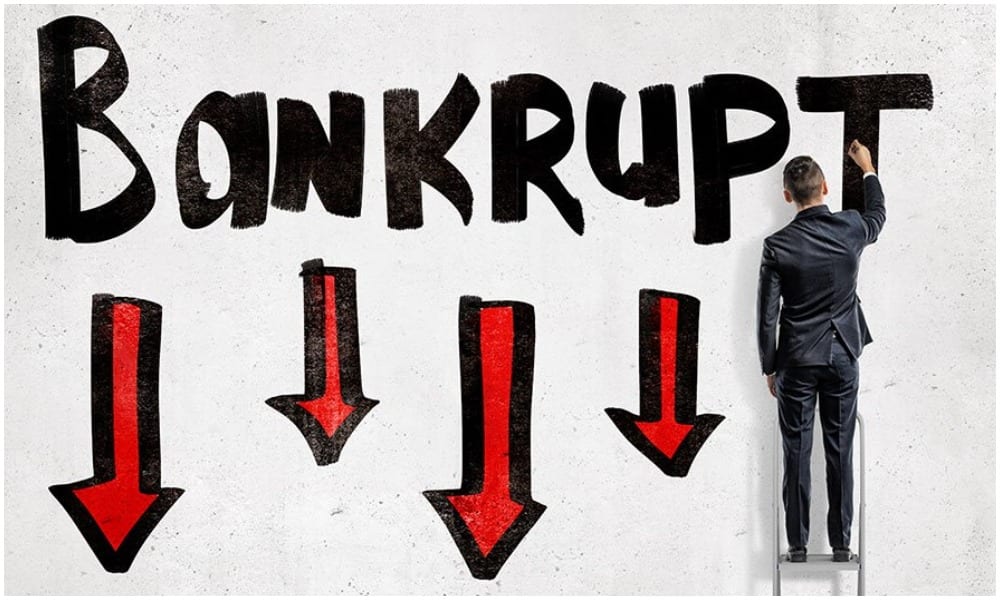
What to Do When a Large Client Goes Bankrupt

Scoring a large clientele is a cause for celebration. Still, news of the bankruptcy of the client can put a dampener on the spirits of a small business dependent on the revenue. It could be especially devastating if the income forms a big part of the company.
So, what can you do in this precarious situation? Read on to explore your options.
-
Start Communication Early

Roman Samborskyi/Shutterstock: Clear communication is the key
If a corporation is looking at bankruptcy, things get muddled up very fast. As a creditor, make your voice heard to ensure that the client remembers you in the situation of repayment. Be assertive and confident while communicating.
-
Plan

George Rudy/Shutterstock: Have plan ready to deal with the contingency
Be proactive while running a business; it pays in the long run. If you get wind of the client facing any financial troubles, immediately start drafting a plan on how to deal with the contingency.
-
Marketing Your Business
Be on the lookout for more clients that could potentially replace the bankrupt one. Put your business out there and actively market offered services or products, and something is bound to stick.
Remember the valuable advice, “Do not put all your eggs in one basket,” It is helpful for investments and to maintain a set of reliable customers.
-
Keep Sales and Marketing Division Running
A big mistake that many entrepreneurs tend to commit after landing a potentially significant buyer is that their sales and marketing division starts slacking with no effort to run them smoothly. This is particularly devastating when all hopes are pinned on a client’s business, and things go south.
-
Manage Debtors

RomanR/Shutterstock: Keeping a check on the debts
By the time a big organization starts experiencing a liquidity crunch, it is already too late. In this case, start following up with your accounts receivables and sending them weekly reminders and ensure regular invoicing. It doesn’t necessarily have to be fully paid, but realizing part of the money is far better than no payments at all.
-
Accumulate Evidence
This is when the nagging habit of emailing works. Creating a paper trail serves as documentary evidence if any clients refuse to pay or falsely claim something. If the issue reaches the court, there will not be anything to argue about because of strong evidence.
Although, not everything has to be a lost cause, accumulate your major accomplishments from clients, and start building a portfolio to show prospective ones.
-
Be Flexible with Repayment Terms
If previously, the payment terms with clients had been to pay after the service completion, then switch to 50% advance upfront or something else that brings in cash initially and is fine by your debtors to stay in business.
-
Settle Accounts As Soon As Possible
In case of suspicion, due to the client’s actions that they are on the brink of insolvency, take charge immediately. You may get your dues with multiple reminders and debt collection agencies. In contrast, many people will not be able to do so.
-
Having Important Connections Works
While navigating the bankruptcy process is nothing short of a nightmare, the people who usually get paid are either feared or loved. If you have connections in high places, then pull some strings by explaining the risks you are facing to get your rightfully earned money.
-
Credit Checks
You must commission credit checks on suspicious clients to ascertain their cash flows. It also helps to have an ironclad agreement wherein clauses like, over dues beyond 90 days, gives you the right to take them to court.
If you actively follow the points mentioned and keep them in your mind at the right time, it might just save you from a difficult situation and huge economic losses.
More in Legal Advice
-
`
Hollywood Stars Who Stole the Show at the 2024 LACMA Gala
Blake Lively Stuns in Tamara Ralph Couture “It Ends With Us” star Blake Lively made a dramatic entrance at the 2024...
November 12, 2024 -
`
How Can You Leverage Higher Income Limits for Capital Gains Tax Benefits?
As tax laws evolve, understanding how to leverage higher income limits for the 0% capital gains bracket becomes essential for savvy...
November 7, 2024 -
`
Investor David Einhorn Thinks Peloton Can Be Worth Five Times More IF It Cuts Costs
David Einhorn, founder and president of Greenlight Capital, has a bold vision for Peloton. He believes the struggling fitness company could...
November 7, 2024 -
`
How Interactive Matter Maps Improve Legal Research and Planning
Interactive matter maps have transformed legal research and planning by simplifying how law firms manage complex matters. These tools help legal...
November 1, 2024 -
`
The Role of Global Mobility in Business Planning for 2025
In an era where the competition for top talent is fierce, the significance of global mobility in business planning cannot be...
November 1, 2024 -
`
Will AI Legal Advice Empower or Exclude Those in Need of Justice?
The rapid advancement of technology has introduced AI legal advice into the legal profession, creating both excitement and concern. Law firms,...
October 25, 2024 -
`
Trump vs. Harris – Who Does Hollywood Support?
As the race for the White House heats up, celebrity endorsements have become an influential force in shaping public opinion during...
October 22, 2024 -
`
How to Understand Your Energy Bill and Prevent Common Billing Errors
Understanding your energy bill is essential for managing household expenses and catching potential errors. Your energy bill offers a breakdown of...
October 18, 2024 -
`
Is Shawn Mendes’ Relationship With Camila Cabello Finally Clarified?
Recently, Shawn Mendes shared insights into his connection with Camila Cabello during an interview with Jay Shetty. Their relationship, which has...
October 15, 2024















You must be logged in to post a comment Login